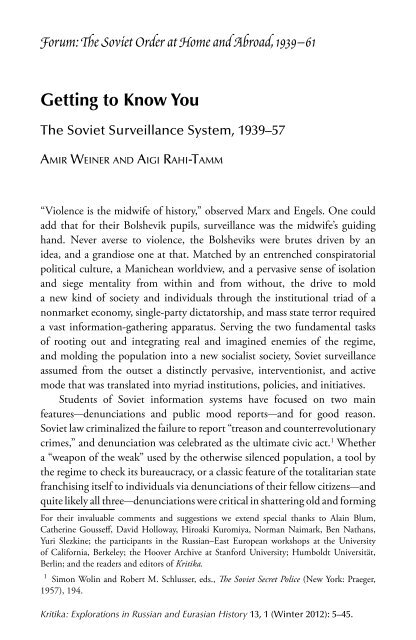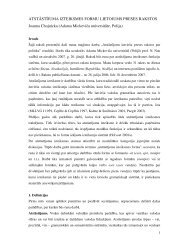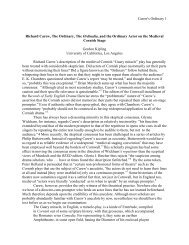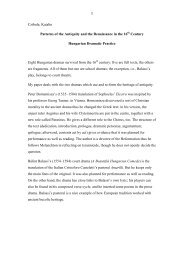Amir Weiner Getting to Know You
Amir Weiner Getting to Know You
Amir Weiner Getting to Know You
Create successful ePaper yourself
Turn your PDF publications into a flip-book with our unique Google optimized e-Paper software.
Forum: The Soviet Order at Home and Abroad, 1939–61<br />
<strong>Getting</strong> <strong>to</strong> <strong>Know</strong> <strong>You</strong><br />
The Soviet Surveillance System, 1939–57<br />
<strong>Amir</strong> <strong>Weiner</strong> and Aigi Rahi-Tamm<br />
“Violence is the midwife of his<strong>to</strong>ry,” observed Marx and Engels. One could<br />
add that for their Bolshevik pupils, surveillance was the midwife’s guiding<br />
hand. Never averse <strong>to</strong> violence, the Bolsheviks were brutes driven by an<br />
idea, and a grandiose one at that. Matched by an entrenched conspira<strong>to</strong>rial<br />
political culture, a Manichean worldview, and a pervasive sense of isolation<br />
and siege mentality from within and from without, the drive <strong>to</strong> mold<br />
a new kind of society and individuals through the institutional triad of a<br />
nonmarket economy, single-party dicta<strong>to</strong>rship, and mass state terror required<br />
a vast information-gathering apparatus. Serving the two fundamental tasks<br />
of rooting out and integrating real and imagined enemies of the regime,<br />
and molding the population in<strong>to</strong> a new socialist society, Soviet surveillance<br />
assumed from the outset a distinctly pervasive, interventionist, and active<br />
mode that was translated in<strong>to</strong> myriad institutions, policies, and initiatives.<br />
Students of Soviet information systems have focused on two main<br />
features—denunciations and public mood reports—and for good reason.<br />
Soviet law criminalized the failure <strong>to</strong> report “treason and counterrevolutionary<br />
crimes,” and denunciation was celebrated as the ultimate civic act. 1 Whether<br />
a “weapon of the weak” used by the otherwise silenced population, a <strong>to</strong>ol by<br />
the regime <strong>to</strong> check its bureaucracy, or a classic feature of the <strong>to</strong>talitarian state<br />
franchising itself <strong>to</strong> individuals via denunciations of their fellow citizens—and<br />
quite likely all three—denunciations were critical in shattering old and forming<br />
For their invaluable comments and suggestions we extend special thanks <strong>to</strong> Alain Blum,<br />
Catherine Gousseff, David Holloway, Hiroaki Kuromiya, Norman Naimark, Ben Nathans,<br />
Yuri Slezkine; the participants in the Russian–East European workshops at the University<br />
of California, Berkeley; the Hoover Archive at Stanford University; Humboldt Universität,<br />
Berlin; and the readers and edi<strong>to</strong>rs of Kritika.<br />
1 Simon Wolin and Robert M. Schlusser, eds., The Soviet Secret Police (New York: Praeger,<br />
1957), 194.<br />
Kritika: Explorations in Russian and Eurasian His<strong>to</strong>ry 13, 1 (Winter 2012): 5–45.

















